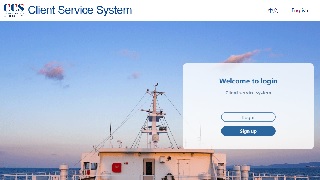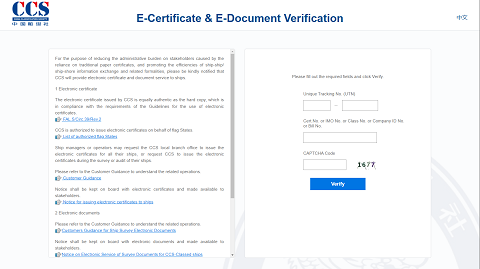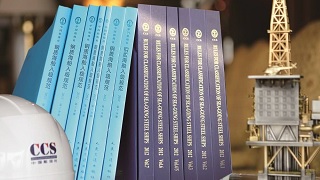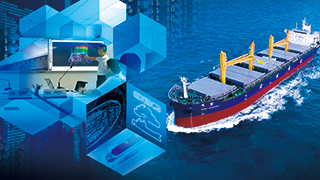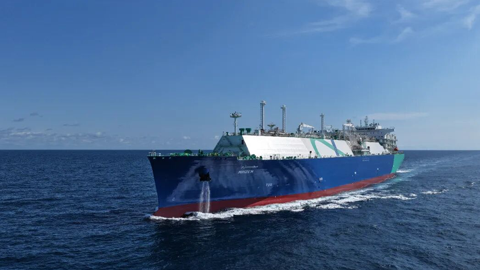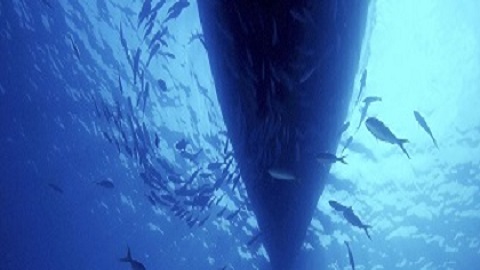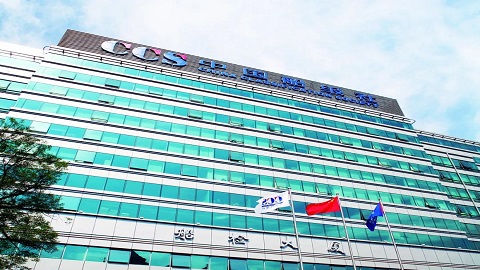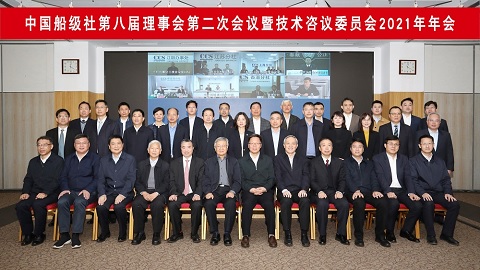I. Rules for Green Eco-ships
China Classification Society
actively advocates green shipping and green shipbuilding, strives to promote
the application of energy saving and emission reduction technologies, and leads
the development of green shipping and ecological shipping. During
the 12th Five-Year Plan period, CCS has released to the industry the Rules for Green
Ships, which are the first in the world, and have been steadily promoting the
development and application of green energy efficiency, energy saving and
emission reduction technologies. At the end of 2019, the Rules for Green-Eco
Ships (2020), as integrated rules for ships with green characteristics, were
developed and released to improve the green ecological level of shipping. Based
on the requirements of the original Rules for Green Ships in energy efficiency,
environmental protection and working environment, and considering the recent
technological development and subsequent green ecological development trend, the
Rules for Green-Eco Ships (2020) have constructed a comprehensive green eco-ship
indicator system for the first time.By taking the two primary elements:
environmental protection and ecological protection as the core content, the
Rules proposed technical indicators and requirements covering six aspects: greenhouse
gas (GHG) emission control, prevention of transfer of invasive organisms, environmental
friendliness, control of discharge of water pollutants, control of emission of
air pollutants and control of use of hazardous materials, fully reflecting the
requirements for safety, environmental protection and sustainable development. A
comprehensive green ecological evaluation indicator system for ships has been
established for the first time both domestically and abroad to comprehensively
evaluate the utilization of ship resources, the use of clean energy and green
technologies, the level of energy efficiency, the control of emission of pollutants
and environmental friendliness of ships, catering for the development of ecological
technologies and the demand of shipping market.
The green eco-ship rule system
consists of two parts: the Rules for Green Eco-ships, which are the main part,
and the green technology guidance documents. Of them, Rules for Green Eco-ships
reflect two major technical elements: ecological protection and environmental
protection, while the green technology guidance documents are used to support
the specific green technology requirements of the above two technical elements
presented in the Rules.


Green eco-ship
rules and indicator system
Based on in-depth research and application of new technologies in full
scale ships in recent years, CCS has released a series of guidelines including
Guidelines for Application of Sailing Technology (2020), Guidelines for Surveys
of Air Lubrication System for Drag Reduction of Ships (2020), Guidelines for
Design and Installation of Exhaust Gas Cleaning System, and Guidelines for
Selective Catalytic Reduction System Ready, etc., to continuously enrich and improve
the green eco-ship rule system, to facilitate and support the application of energy
saving and environmental protection technology, and to identify the
corresponding green ecological technology for ships.
II Technical capacity and service
1) Classification of green
eco-ships
According to the green eco-ship
indicator system, CCS is able comprehensively evaluate a ship’s greenness, and
provide the green ecological class notations for ships with high energy
efficiency, low emission and low pollution. Up to now, more than 300 ships
engaged in international navigation or domestic navigation have been assigned
with green ship class notations. Green ship rule indicator system has become an
important reference technical indicator for shipowners on newbuildings. It can
be expected that the subsequently upgraded green ecological ship class
notations will gain more attention from the government and other related
industries such as finance, insurance, etc., and will be introduced as a key evaluation
indicator for ships, providing social and economic significance in a wide
range.

2) Control of SOx emission from
ships/safe use of low sulphur fuel
CCS has developed and
published a series of safety standards for onboard application of SOx emission
reduction technology/products, and established a complete standard system
including statutory survey and class safety survey, laying a foundation for the
application and promotion of relevant emission reduction technologies/products.
|
|
Low sulphur fuel
|
EGC
|
Clean fuel
|
|
Class safety
|
Guidelines for Use of Low Sulphur Distillate Fuels
in Ships
|
Guidelines for Design and Installation of Exhaust
Gas Cleaning System
|
Guidelines for Design and Installation of Gas Fuel
Engine Systems of Liquefied Gas Carriers
|
|
Statutory requirements
|
International/Domestic Regulations, Guidelines for
Testing and Survey of Exhaust Gas Cleaning Systems
|
To cope with
the implementation of the new emission standards in the future, CCS has carried
out research on a series of SOx/NOx emission solutions by considering ship types,
routes, voyage, fuel market and emission requirements. CCS has developed a
series of service products.
|
EGCS Ready
|
SCRS Ready
|
LNG Ready
|
|
Guidelines for Exhaust Gas Cleaning System Ready
|
Guidelines for Selective Catalytic Reduction System
Ready
|
Guidelines for Natural Gas Fuel Ready Ships
|
3) Control
of NOX Emissions from Ships
CCS has arranged to carry out research
on key nitrogen oxide (NOX) emission control systems (SCR system,
EGR system) and key technologies, developed and released Guidelines for
Approval and Survey of Selective Catalytic Reduction System, Guidelines for
Selective Catalytic Reduction System Ready, and Guidelines for Design and
Installation of Exhaust Gas Cleaning System, etc., to provide guidance for ship
design, construction/modification and survey, etc., thus promoting application
of the SCR technology onboard ships and safeguarded safe application of SCR and
EGR systems onboard ships.
Based on related
projects and services for real ships, CCS has developed the software for
calculating emitted pollutants from marine engines and the software demonstrating
EGC/SCR/EGR system performance evaluation and the working process, which can
quickly calculate the emission ratio of emitted pollutants from marine engines (including
NOx, HC, CH4, CO and PM), and determine the applicable regulations or standards
to be complied with by marine engines, so as to save time for product
manufacturers, surveyors on evaluating emissions from engines and collect emission
data on different types of engines. Furthermore, the economy and other
performance data of the emission reduction scheme of IEGCS can be obtained based
on calculation of the arrangement and working characteristics of IEGCS
according to ship types and routes, so as to assist ship designers and owners in
evaluating and selecting emission reduction schemes.


4) Technology applicable to LNG
fuel powered ships
A complete system of rules and standards applicable to LNG fuel powered
ships has been developed. A series of rules and guidelines have been developed including
Rules for Natural Gas Fuelled Ships, Guidelines for Design and Installation of
Gas Fuel Engine Systems of Liquefied Gas Carriers, Control and Safety Systems
for Dual Fuel Engines and Guidelines for Natural Gas Fuel Ready Ships, etc.

CCS is able to provide
comprehensive plan approval and survey services for conversion into LNG
fuel-powered ships and newly constructed ships, joint research and development
services for LNG fuel-powered ships, and application services for
LNG fuel power systems and bunker technology, to be more specific, including plan
approval of LNG fuel-powered ships, ship type approval, principle approval, risk
analysis of LNG fuel-powered ships, and stress assessment of low-temperature
pipelines in LNG fuel-powered ships, etc.
5) Shore
power application technology
CCS has added the technical requirements of ship AC shore power system in
the rules, which provides technical support for the application of shore power
technology. At present, CCS is able to carry out comprehensive plan approval
and surveys in relation to the application of shore power technology, and to provide
technical service for the application of shore power.


6) Assessment of technical efficiency
of existing ships (EEXI)
CCS has acquired the capability
to conduct ENERGY EFFICIENCY EXISTING SHIP INDEX (EEXI) analysis for the
existing fleet through in-depth cooperation with the industry at the earlier
stage and joint research and analysis of EEXI solutions for existing ships. In
the future, CCS can, based on EEXI schemes, analyze and evaluate energy
efficiency of fleets or single ships, and provide targeted energy efficiency analysis
reports and recommendations on existing fleets/ships, so as to provide
technical support for shipowners to effectively deal with the risks and
challenges that may be brought by the introduction of energy efficiency rules
for existing ships.

The technical services provided
by CCS include:
a. Assessment of fleet technical
energy efficiency, and analysis of applicability of EEXI requirements and
recommendations for response;
b. Targeted fleet technical energy
efficiency improvement solutions;
c. Survey and verification
(follow-up services) of EEXI requirements for ships.
7) Air lubrication technology
for drag reduction of ships
Through in-depth research on air
lubrication technology for drag reduction of ships and related systems and
products, CCS has developed and released the Guidelines for Surveys of Air
Lubrication System for Drag Reduction of Ships, to promote the application of
air lubrication technology on board ships, in order to meet the increasingly
stringent requirements of EEDI and EEXI in line with the GHG emission reduction
strategic objectives.

CCS has formed complete
technical service capability through relevant ship projects. Now CCS can
provide technical support and services for different parties in drag reduction
system design, engineering adaptability analysis, design of monitoring systems,
system and equipment installation and application, energy saving effect
calculation and evaluation, etc.
8) Ballast water treatment
Through years of research and
accumulation, CCS has established a complete set of guidelines, from product approval
to onboard application, to facilitate the application of regulations of the ballast
water convention, including: Guidelines for Implementation of Ballast
Water Management Convention, Guidelines for Type Approval of ship’s Ballast
Water Management Systems, Guidelines for Development of Ship’s Ballast Water
Management Plan and Guidelines for Survey and Certification for Ballast Water
Management of Ships.

CCS can provide technical
services and support to different interested parties such as designers and
shipowners, including:
a. Providing more
comprehensive technical information for reference by relevant parties in selecting
equipment according to different types of ballast water treatment systems on
the market and their characteristics, including their applicable scope,
installation space and other data, etc.
b. Analyzing the
latest development of the ballast water convention, the implementation
requirements of regional (US) ballast water control, changes in the way of
ballast water control and management (PSC) and the problems existing in the
current implementation of the ballast water Convention, and providing strategies
and suggestions for the timing of ballast water treatment system and its
installation.
c. Providing installation
and arrangement suggestions for ballast water treatment plants for different
tonnage ships and different navigation areas based on the working principle of
different types of ballast water treatment plants; providing additional
requirements for installation and arrangement on tankers.
d. Providing suggestions
on the installation of ballast water treatment plants on ships navigating in
The Waters of the United States based on the special requirements of USA on
ballast water management system.
Note: If you need to reprint, please indicate the source of the information.

